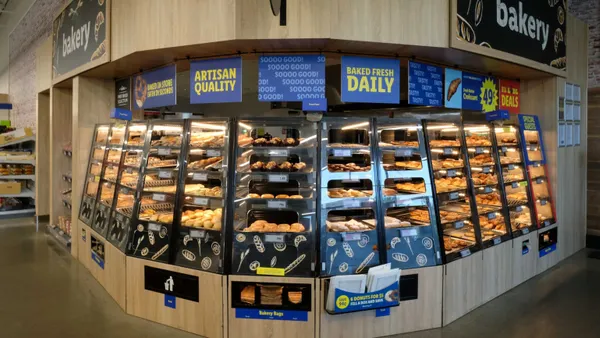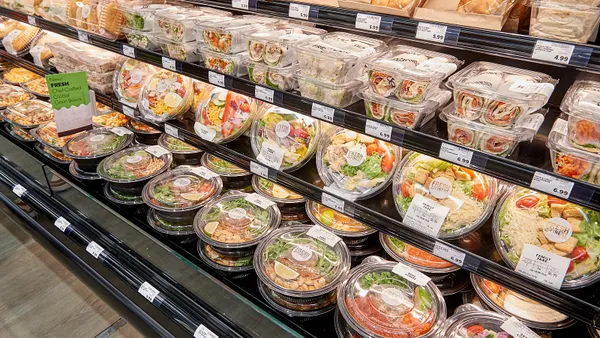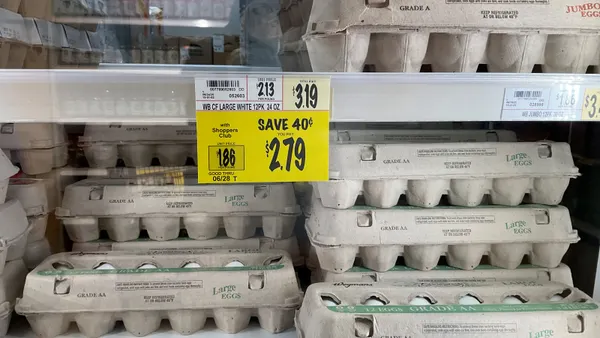Dive Brief:
- Consumer demand for meat has continued to rise throughout the pandemic, despite higher prices, according to a recent analysis from CoBank. Beef consumption has grown 1.4% from 2019 to 2021 even as combined retail prices increased by more than 20%, the report found. And for chicken, both consumption and prices hit record-high levels in 2021.
- But as beef prices continue to increase, consumers may begin to “trade down” when deciding which protein to purchase, CoBank said, with chicken most likely to benefit. The USDA is expecting a slight decline in beef consumption in 2022-23 as domestic supplies fall with shrinking cattle herds and growing exports, CoBank noted.
- As meat prices continue to grow, poultry producers like Tyson Foods and Pilgrim’s Pride stand to benefit from consumers cutting back on pricier proteins, even as they face challenges such as highly pathogenic avian influenza (HPAI) and higher feed costs.
Dive Insight:
Inflation has had an outsized impact on the price consumers pay for meat at the grocery store. The consumer price index for meat rose 14.8% in the 12 months from March 2021 to 2022, according to the Bureau of Labor Statistics. But while beef prices increased by 16% and pork by 15.3%, poultry's increase was slightly lower at 13.2%.
Tyson Foods and Pilgrim’s Pride, two of the biggest poultry providers in the United States, have each reported strong sales growth despite the higher prices.
In Pilgrim’s Pride’s first-quarter 2022 earnings call last week, CEO Fabio Sandri said that the company is poised to benefit from changes in consumer behavior, stating that “chicken still remains the most affordable, flexible and available option relative to the other proteins.”
Meanwhile, Tyson CEO Donnie King said during the meat giant’s first-quarter earnings call in February that the company is upping its capacity to meet demand, as sales for the segment increased 37%.
Despite high demand among consumers, poultry is still facing headwinds that could slow its momentum. The crisis in Ukraine continues to inflate the cost of grains that go into animal feed, with Wells Fargo economist Michael Swanson telling sister publication Food Dive in March that meat producers will continue to pass along higher prices “because you can’t run that sector without the higher price of corn and soybeans.”
Another problem looming over the chicken industry is bird flu, which has been detected in the flocks of poultry producers like Tyson and Hormel’s turkey brand Jennie-O. As of May 2, there were 265 commercial and backyard flocks confirmed to have HPAI, according to USDA data, affecting 36.7 million birds. With the prevalence of HPAI only increasing, however, poultry producers could be forced to raise prices if they have trouble growing supply. Sandri of Pilgrim's Pride said that the company had not yet experienced any significant interruptions from the outbreak.
Despite a seemingly endless appetite for chicken, there does appear to be a cap at which some consumers will accept higher prices. According to a consumer survey commissioned by Ingredient Communications and conducted by SurveyGoo last December, 29% of U.S. consumers said that they would stop buying meat once prices increased by a third.












